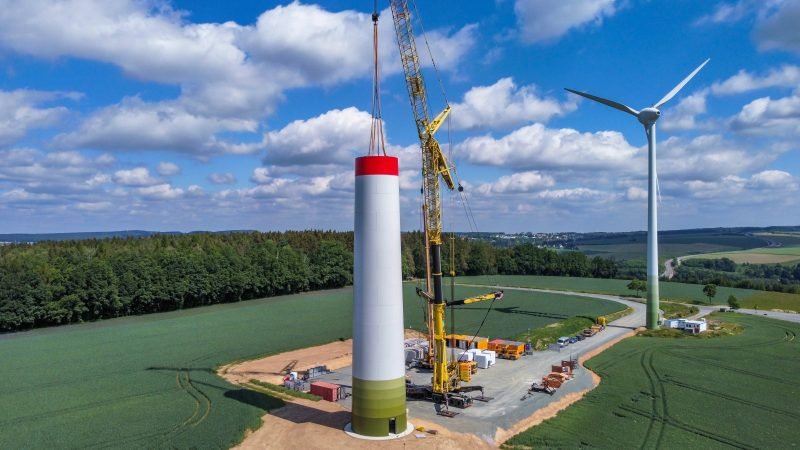European Union countries collectively installed 17 gigawatts of new wind power farms in 2023, marking the highest annual figure to date.
In a significant stride towards a greener future, European Union countries collectively installed 17 gigawatts of new wind power farms in 2023, marking the highest annual figure to date.
However, despite this milestone, the achievement falls short of meeting the ambitious renewable energy targets set by the EU. Industry data released on Friday reveals that, while the continent is accelerating its energy transition, more substantial efforts are needed to attain the renewable energy goal for 2030.
According to estimates from Brussels, a minimum of 37 gigawatts of new wind power must be added each year to meet the EU’s 2030 renewable energy target. The newly installed capacity in 2023 comprised 14 gigawatts of onshore wind power and 3 gigawatts offshore, surpassing the 16 gigawatts added in the previous year, as reported by industry association WindEurope.
Germany emerged as the leader in new wind capacity installations, followed closely by the Netherlands and Sweden. Despite this progress, the EU faces challenges in the wind power sector, including factors such as soaring inflation, intensified competition, and delays in obtaining permits for projects.
The capacity factor, a measure of the electricity produced from each gigawatt of wind power installed, continued to grow. New onshore wind power farms demonstrated a capacity factor ranging between 30-48%, while offshore wind consistently reached an impressive 50%, according to WindEurope.
In recent years, the wind power sector in Europe encountered obstacles, with permitting issues being a significant concern. However, WindEurope CEO Giles Dickson expressed optimism, stating that improvements were underway, particularly due to new EU rules designed to reduce permit waiting times. These rules have contributed to an increase in the number of permits issued in the previous year, raising hopes for sustained improvement in the sector.
Dickson stated, “Things were very bad indeed on the permitting. Now they are improving significantly,” adding that the positive trend observed last year is expected to continue, leading to an increase in the volume of new wind projects.
Wind energy played a crucial role in Europe’s electricity generation, contributing 19% to the EU’s total electricity in 2023. This substantial share helped the bloc achieve an impressive 44% of its total power from renewable sources, according to analysis by the Fraunhofer Institute.
Acknowledging the challenges faced by the wind power sector, the European Commission took action in October by unveiling a comprehensive package of measures to boost Europe’s wind industry. These measures included increased financial support for wind industry suppliers through the European Investment Bank and modifications to green energy auctions that could favor local manufacturers.
Looking ahead, the International Energy Agency (IEA) estimates that Europe will continue to build 23 gigawatts of new wind capacity annually from 2024 to 2028. While the continent has made remarkable progress in 2023, the journey towards a sustainable and renewable energy future requires ongoing commitment, collaboration, and innovative solutions to overcome existing challenges and meet ambitious targets.
